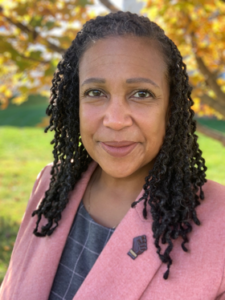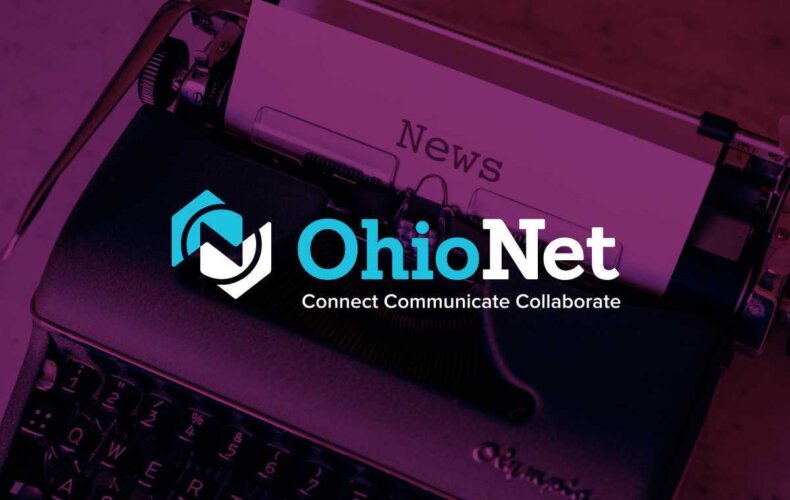
Director’s Desk – April 2022

Earlier this year, while driving in my sleepy suburb, I noticed the local police behind me. I looked down, confirmed I was not speeding, and took a deep breath. When their lights went on, I put my signal on to indicate I was pulling over, and then I parked and did all the things I’ve taught my children. I quickly found my license and registration, texted my best friend to say I’d been pulled over and shared my location, rolled down my window and put my hands on the steering wheel in plain sight.
Why, you may be asking yourself, did I go through all those motions? Because I wasn’t violating any traffic laws, so I didn’t know why I was being stopped. Maybe my car was too nice for a woman of color to be driving in that area? Maybe the monthly quota of tickets had not been met? Maybe they were bored?
Why was my immediate reaction one of fear? Because as a Black woman living in America who also watches the news, I know something as simple and routine as a traffic stop can go tragically wrong. This is not a unique feeling. Many people in historically excluded groups face situations every day that threaten their safety and security – situations which the majority never have to give a second thought. And these situations are based not only on race, but also on ethnicity, religion, gender, age, and other seen or unseen identifiers.
Why is that so? Aren’t our laws written in such a way as to provide equal protection to all? That is a discussion for another day. Even assuming they are intentionally written to provide equal protection, the written and unwritten policies that inform those laws are not always equitable. Therein lies the problem.
Inequitable policies can be grounded in inequitable and discriminatory beliefs and practices. Ideas founded not in data or fact, but in self-interest (at best) or hate and discrimination (at worst). When we weaponize beliefs, we may act against our own interests (albeit unintentionally) and potentially codify hate. Unintended consequences are still consequences.
Let me give you some examples. As a woman, I would have technically earned the right to vote in 1920. However, as a Black woman, I would likely have been unable to exercise that right until 1965 due to policies that discriminated against Black voters, including poll taxes and literacy tests. If you’re interested in reading more about the effects of government-sponsored segregation and intentional racial polarization in this country, I suggest this article entitled “Racial Cartels.” It’s an interesting framing of historical racial exclusion.
But Nancy, you say, this is just one outdated example. Dear Reader, I wish it were so. Have you ever been told your hair was unprofessional? For those who don’t know, there is a long history of people wearing natural hairstyles being discriminated against or even losing their jobs as a result of their hairstyle. Similarly, athletes have been told to cut their hair or they can’t compete. Can you imagine? We only recently saw the passage of the CROWN Act in the US Senate in 2022. But wait, there’s more. Here is a small sampling of policies which may seem fair on the surface but are, in fact, creating inequities which have a direct impact on individuals, including:
- The practice of Redlining
- The origin of HOAs
- The Red Cross blood donor policy
- Proposed bills in Ohio and Texas modeled on Florida’s problematic legislation
- House Bill 233 in Tennessee which removes age restrictions for marriage
Whether it’s the intent or the consequence, these policies, both historical and present day, are not based on reliable science, data, or facts. Instead, they seem to share a foundation in rejecting those who are different, or in “protecting” some way of life that does not exist (and perhaps never has). Policies which discriminate based on age, race, sex, gender, religion, ability or any other status that is protected or should be, must be examined and their validity questioned.
What can we do as individuals or organizations to create a more just and equitable world? I suggest we start with a few simple (but not easy) questions.
- What are your personal or organizational values? Take some time to really think about this. Articulate them, maybe even write them down. We at OhioNet are currently working through this process of examining and articulating our organizational values, and we’re happy to discuss our process with you if you’re wondering how to get started.
- What is your responsibility, to yourself and to others? We do not live in a vacuum, and our choices do not affect us alone. Consider the effects, present and future, of the decisions you make today and act accordingly.
- What one small thing can you do now, to start effecting positive change? Look around. Ask questions. If you are in a position to, examine the policies at your workplace for any unintended bias and work to change them.
If you are overwhelmed by the task ahead, or you need a partner to get started, we’re here to help.
Let’s get to work,
Nancy

